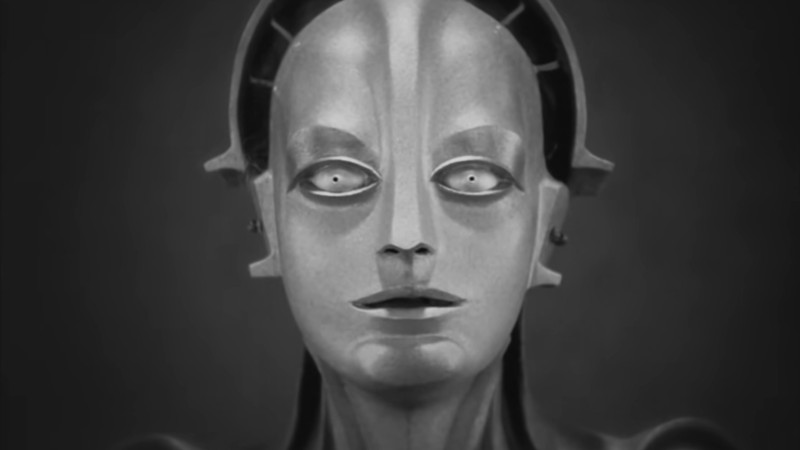Here we are at the start of the new year, which for the Internet Archive means a note about what has just entered the public domain. 1927’s finest previously copyrighted materials are now up for grabs in the public domain, which means there’s a treasure trove of films, books, and music to freely copy and remix.
Their article highlights a few notable pieces of 1927’s popular culture , of which we suggest you should definitely take note of Fritz Lang’s Metropolis if you have any interest in sci-fi, but for Hackaday readers there’s not much else in the article itself relating to technology. Delving into the archive for 1927 is still a fascinating pastime though, because beyond the interest of seeing what’s now free it led onto what was the state of technology in the 1920s. And here we find ourselves as much navigating the English language as we do the library itself, because so much of what we do uses vocabulary from the decades since.
Electronics in 1927 largely involved radio using vacuum tubes, so it’s relatively straightforward to find textbooks from that year such as The theory of thermionic vacuum tubes, and The propagation of radio waves, and a sheaf of radio periodicals to go with them. Computers as we know them simply didn’t exist, and some of the words we’d use to describe the machines used for automation tasks seemingly weren’t in use at the time. Words like “Electromechanical” or “Sequencer” return nothing of use, but there is a wealth of books on heavy electrical engineering. Engineering of power plants sets the scene, and we’d have to admit spending quite some time on Electric Trains. If we spent a while browsing the archive and found a lot of interest, we are guessing you will too.
















Metropolis is a masterpiece. I saw it in college in the 1970’s and we were amazed by the special effects. Scenes from it now are visual tropes, like the man working the dial like a clock face with a lot of force needed.
And the message the movie conveys is even more relevant today than then, as we are more capable of making its dreams and nightmares come true.
I second this. A masterpiece that never gets old !
This time in Germany was a very special one. In retrospect, Germany was at its cultural height, perhaps, with lots of new ideas that were being explored at the time.
Looking back, 1920s Germany is very relatable to modern Germany in several ways, I think.
Judging by the preserved films and photos from that era, it feels more familiar than past-war Germany. People were creative, joyful and playful. Not as stiff and conservative as in 1950s/60s Germany.
For example, some women also wore trousers, were independent or did do work normally associated with men (emancipation).
This was almost scandalous in western Germany of the 50s/60s and sometimes 70s (but not so much in east Germany).
In some way or another, Berlin did outshine Paris in terms of openness and progressiveness at the time.
It’s kind of sad how things changed just a few years later. This sometimes makes me wonder how far the then-young Repulic of Weimar could have evolved if it was just a bit stronger, if its democracy lasted.
On the other hand, there’s so much people can learn from the horrors of those WWs. Hopefully history will never repeat itself in this regard.
About a decade ago I got to see the latest restored version in an actual theater which was a fun experience, though it’d been so long since I saw the version that was available on vhs when I was a kid that I couldn’t tell you what all changed without googling it.
Fact it took 96 years is the more bothersome aspect. I know people live longer but sheesh.
I’ve not checked but it is probably protected under copyright in Mexico for another 25 years yet.
Fritz Lang will have to get a real job now that his source of passive income has dried up.
This is merely true for the US, I’m afraid. In other places on this blue planet, the situation is a bit more complicated. *sigh* 😔
> Electronics in 1927 largely involved radio using vacuum tubes
I’m going to point to a 1939 patent:
US2221573 “IMPULSE GENERATOR”
Extremely high voltages and extremely high currents, using little more than capacitors and resistors. Basically this will kill people who “think” they know what they are doing. It is like an instant Darwin award machine. If you manage not to die, you will probably just damage your eyes with UV-C produced or far worse if you dial the voltage up high enough.
They burnt up numerous amounts of my favourite car in “Metropolis”… – which is why I did not meet my “Rumpler Tropfenwagen” barn find up to now. https://de.wikipedia.org/wiki/Rumpler-Tropfenwagen
My mother was born in 1927. She has seen a lot in her life – and still is.
This interwar era from almost 100 years ago fascinates me.
There was public radio and transatlantic cable communications, automobiles, commercial aviation and mail order catalogues.
Sears Roebuck would sell you almost anything, from an automobile to a complete house. There are extracts from the 1897 catalog here, but the 1926 edition has been reprinted in paper form, and is a lot more interesting.
https://www.hursthistory.org/uploads/1/0/7/0/107013873/sears_catalog_ppt.pdf
You might also like the Bill Bryson novel “One Summer, America 1927”.
I see Fritz comes from the name Friedrich, so let’s see
Fritz Händel Fritz Engels Fritz Nietzsche Fritz Schiller
Fritz der Große (Fritz the great, King of Prussia)
And for effect: Fritz Trump (the ……’s granddad).